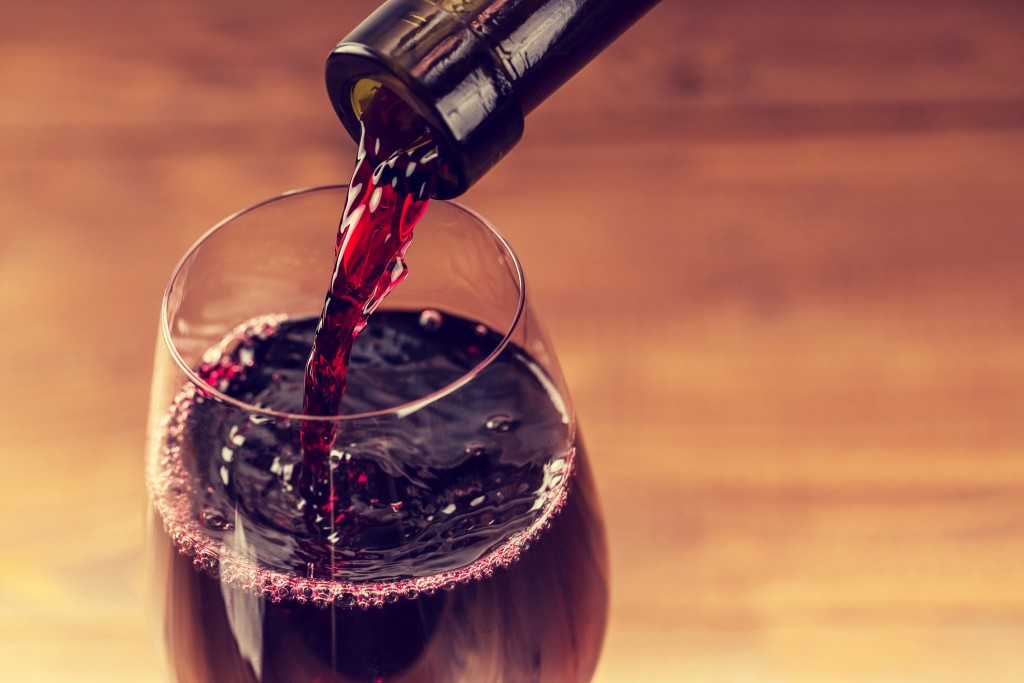The examination and evaluation of Douro wine alerts and stimulates all of our senses. How to taste wine incorporates: sight, the way wine looks in the glass, with regard to color, transparency or opaqueness; smell, the fragrance released in the glass; taste, the sensations in the mouth; and the feel of its body or weight on our palate, which brings us to the finish, better understood as the aftertaste; all combine together to deduce the wine’s complexity, character and overall quality. Touch and even hearing, by the sound of a popping cork, awaken our expectations of the yet to be sampled wine.
When we talk about the taste of a wine we are referring to sweet (grape sugar), sour (acidity), salt, bitter (tannin, or astringency causing dry, puckery mouth feeling), and umami. Umami isa Japanese word meaning “savory” — it applies to the sensation of “savoriness”, and is one of the five basic tastes sensed by the tongue in how we taste wine.
The taste perception of spice, cherry, and red currant is actually our sense of smell. Taste and smell are often confused. The swallowing process aides the retro-nasal olfaction by carrying the residual wine vapors in the mouth – retro-nasally – to the smell center because of the connection of the mouth to the nose via the retro-nasal passage. This is why wine tasters gargle wine in their mouths.
The best objective assessment of wine is a comparison performed among several wines, referred to as tasting “flights”. Wines may be deliberately selected for their vintage, known as horizontal tasting, or multiple vintages from a particular winery, referred to as vertical tasting. To further support an unbiased analysis, bottles may be disguised in a “blind” tasting, to rule out any prejudice regarding vintage, geographic origin, winery, price, reputation, color, or other considerations.
Champagnes and other sparkling wines are best chilled to 43-50F. White wines should be between 55 and 60F; temperatures below this range can suppress the wine’s bouquet (the smells that develop with age in the wine bottle associated with the fruit). New younger, lighter-bodied wine is more easily overpowered by the alcohol content, and should be served cooler. One of the youngest wines, Beaujolais, can be served chilled at 50-54F so the fruity, refreshing flavor will come through. Lighter-bodied reds like Chianti and some Pinot Noirs are best when slightly chilled at 55-60F. The full-bodied wines such as Syrah and Cabernet Sauvignon are best enjoyed a touch warmer than a wine cellar at 59-64F. Sweet Madeira or vintage Port at 50-60F.
A glass that is wider at the bottom with a narrower opening at the top is preferred; a tulip shaped glass that is wider at the top is the least preferable. The international standard wine tasting glass is the ISO (International Organization for Standardization) XL5, which has a low center of gravity to make swirling easier. Swirling releases the esters, ethers, and aldehydes that combine with oxygen to yield the wine’s bouquet.
The order in how to taste the wine is important if you do not want your assessment to be improperly influenced or skewed. The heavier, sweet wines can dominate the lighter wines. Sparkling wines should be tasted first, followed by light wines, then by heavier whites, roses, light reds, heavy reds, and sweet wines last. To know before tasting which is to be the heavier from the lighter you can utilize the appearance and nose (its bouquet or aroma ) as a guide. Heavier wines will be deeper in color with likely more intense aroma to the nose. Sweeter wines when swirled will appear more dense with apparent viscous streaks called tears, legs or what the Germans call church windows.
Judging the poured wine’s color in the glass is the first step in how to taste wine to the oenephile (someone who enjoys wine) and best done against a white background or in natural daylight, with the glass held at an angle for the best perception of color and clarity. All wines should be bright and clean, free of particles or sediment. With reference to sparkling wines, the bead describes the size of the bubbles generated by the wine. White wines have a range of color from water white to deep golden depending on grape variety, sugar content and maturity. Red wines are a dense purple to pale cherry depending on age and grape variety. In this way, the knowledgeable wine taster can receive clues as to the grape variety, and whether the wine was aged in wood.
The procedure of how to taste wine continues with the swirling of the wine in the appropriately shaped glass, followed by the smell or the sniff. Are there any off odors, the smell of mustiness or a vinegary scent? If you sense the bouquet is clean, then sip and taste to assess the quality. Is the wine concentrated or light? Does it smell of fresh fruit, berries, or dried fruit, maybe flowers, nuts, spices, herbs, or vegetation? Is there a presence of vanilla, cedar, or can you perceive a scent from oak barrels? Does the wine show age and maturity with the smell of leather, coffee beans, chocolate, or truffles? First isolate the predominant smell and then identify the others. The nose is like a muscle, the more you use it, the more refined it will become.

